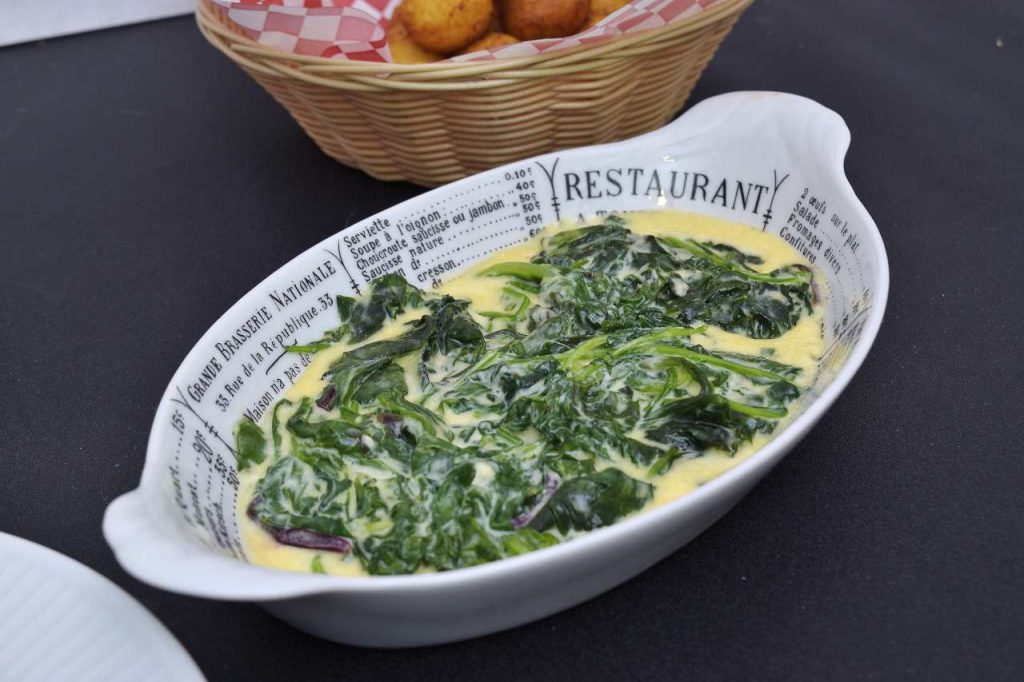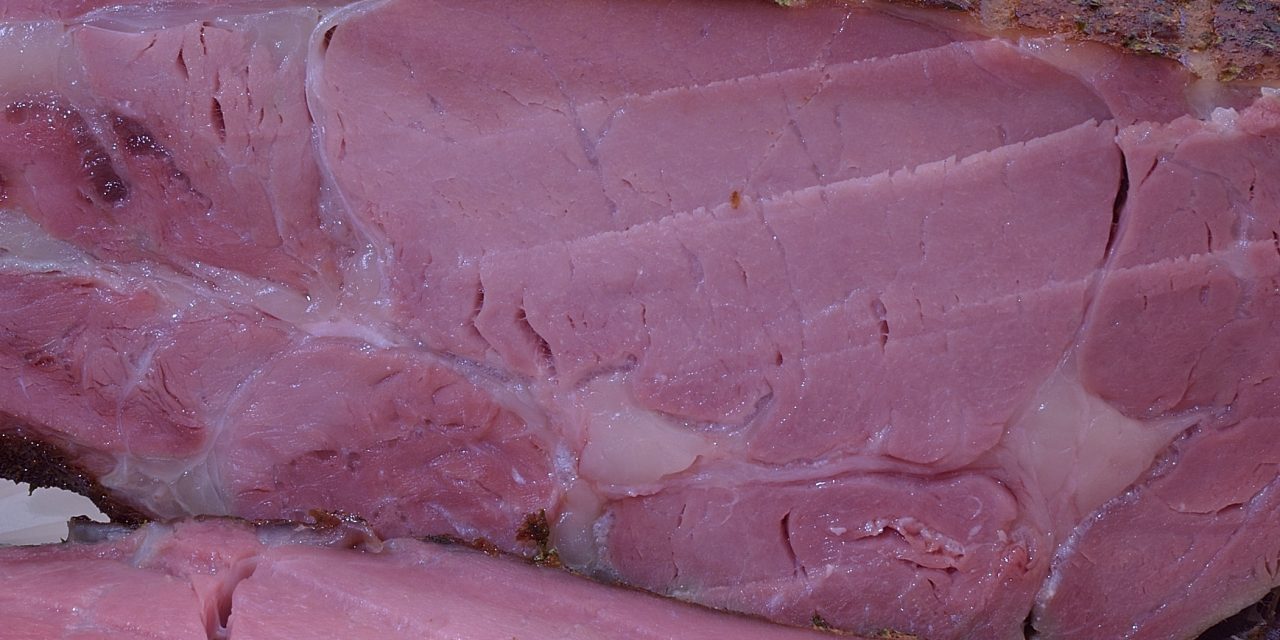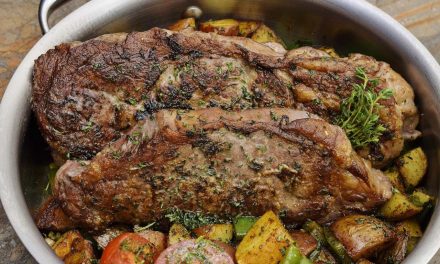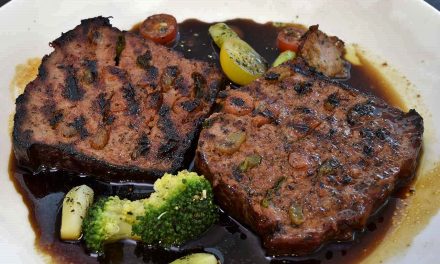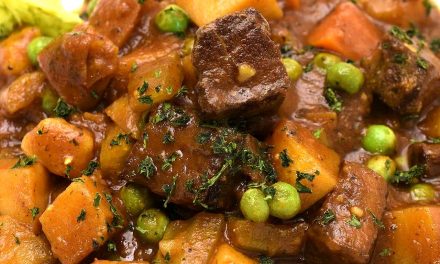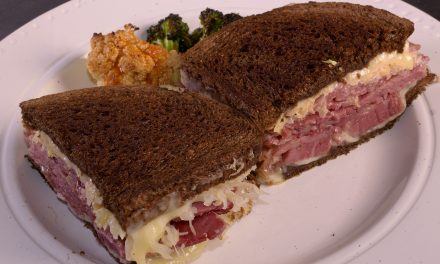I’m kidding, right?
How can you have prime rib for two at home without having a ton left over? We all know that prime rib is usually designated for holiday parties or restaurant menus. You need at least ten people to make it feasible. Don’t get me wrong, next day prime rib is good, very good. On the other hand, if you have a big piece of prime rib in the fridge today, you probably just had it last night–you might not want it again yet. The Modernist chefs say that enjoyment of a dish goes into rapid decline after two bites–that’s why they serve 20 course meals that are all about 2 bites each. We needn’t go to that extreme.
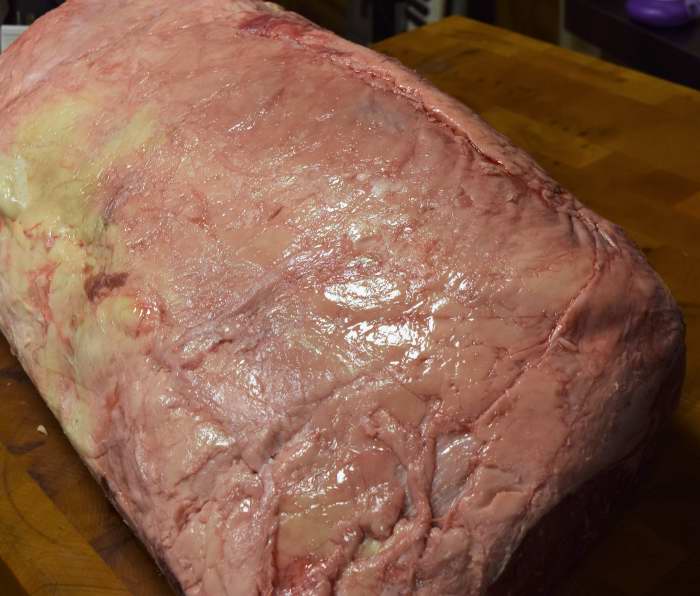
The whole prime rib is so big, I couldn’t even fit it in the picture! Not really, but this 22 pounder gets the idea across–it’s a big piece of meat, usually closer to 15 lbs. They can be cut down into halves or even thirds to avoid all that bulk. Once you get down to about 5 lbs., the roast starts getting difficult to hold still and slice straight.
Like Laurence Fishburne says in those Matrix movies “What if I told you…?” What if I told you that you could have prime rib for two anytime you wanted, with no more than a four hour window to make it happen? You could meet the kismetic partner of your romantic dreams on the bus in the morning, and serve them prime rib at your place that night.
Minimalism
Even starting with a whole roast, it gets difficult to slice uniformly once the roast is about a third of its original size. After all that handling, the whole thing just starts falling apart.
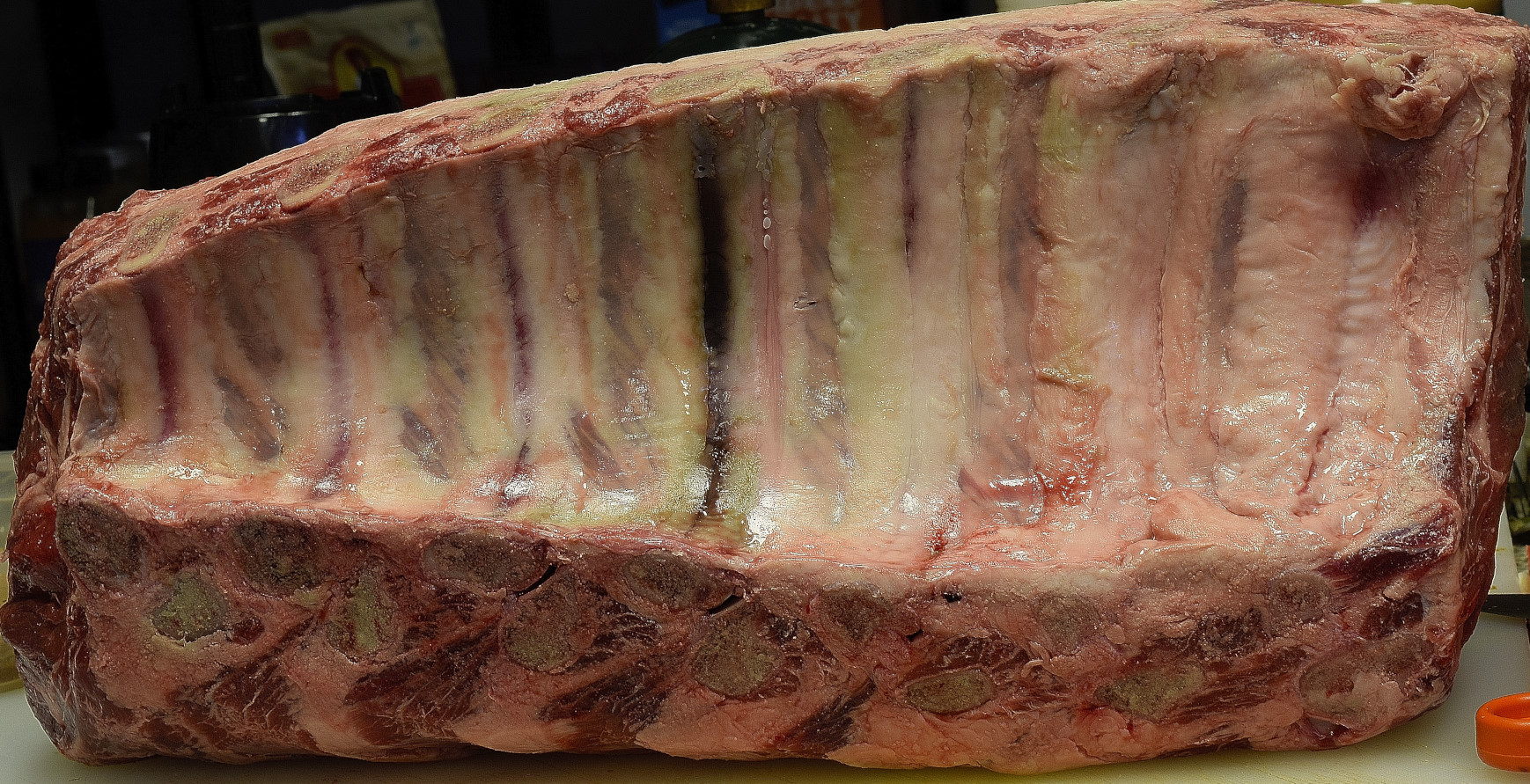
We started with a whole prime rib, bone-in, 15 lbs. It was a holiday special down at the local market chain so I got a good price. Rib roasts typically have 7 rib bones. I cut a 3 lb. section (2 bones) from the left end in the picture–where the bones are the shortest in length. That’s the shoulder end, and for me and many others the most desirable end. Fattier than the other end, but more tender and more flavorful.
The rest of the roast can be cut into steaks, etc. We’re not going to go into that here, but this website and Lipavi.com have a lot of applications.
Notes on Duration
For all practical purposes, the same temperature will always result in the same appearance of doneness. Time determines tenderness–how much collagen will convert to gelatin at a certain temperature. But there is no “moment” before which the protein is under-cooked and after which it is ruined. At typical sous vide temperatures (below 150 F/65 C), the tenderization process proceeds very slowly. As a matter of your personal convenience, the difference in texture between 8 hours and 12 hours will be hardly noticeable, if detectable at all.
This changes the whole “I like sous vide but the timing is so inconvenient” caveat into a model that almost anybody can fit into their day. If you are mindful of the temperatures you are using, you can put most land/air dwelling proteins in the bath in the morning before you go to work and remove them from the bath when you get home.
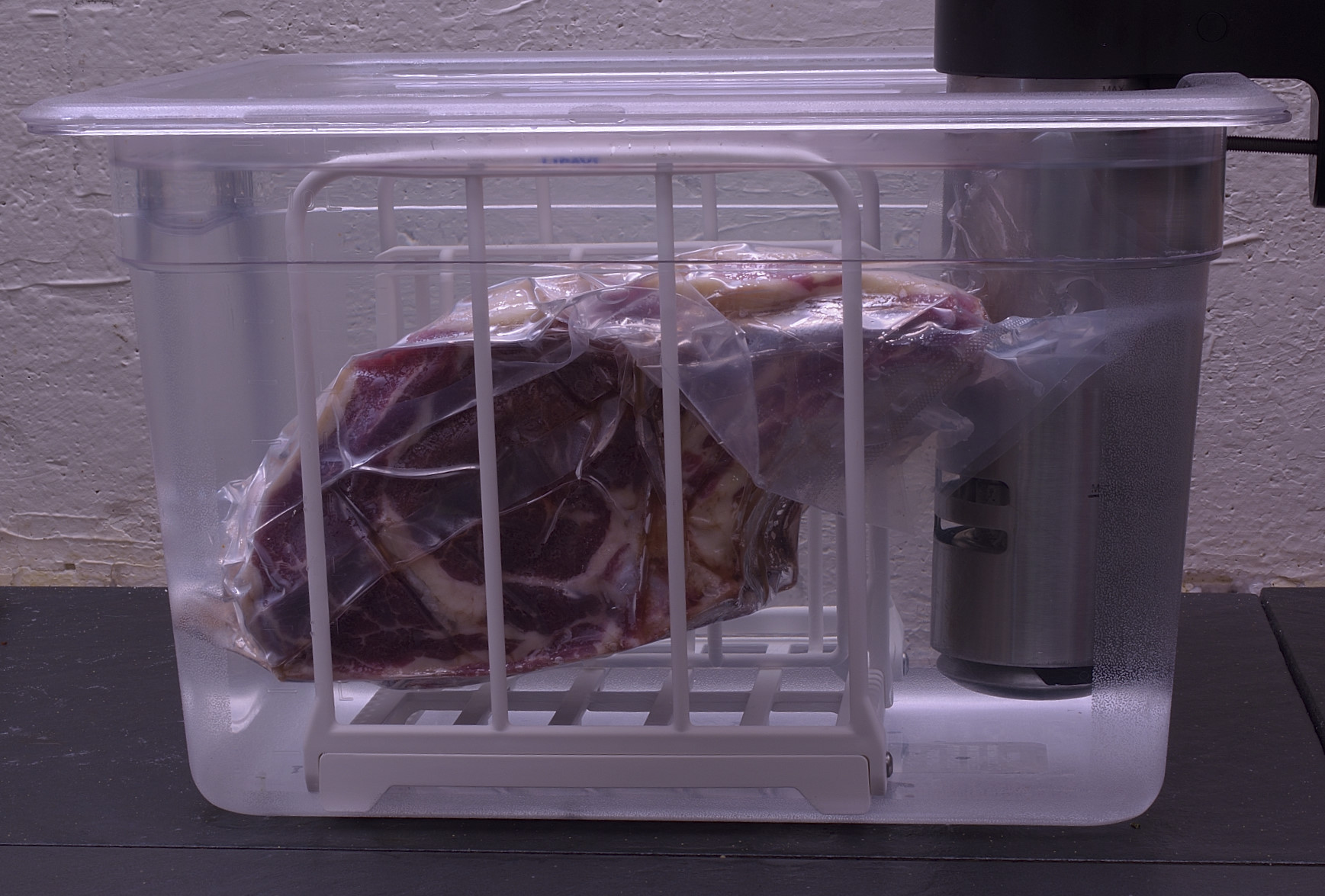
Preheat the sous vide bath and process the rib roast at 131.5 F/55 C for eight hours. When the time has elapsed, remove the roast from the bath and cold shock in iced tap water until it achieves 70 F/21 C–about fifteen minutes. Refrigerate at 40 F/4 C until day of service. If you attempt to go directly from bath to smoker, the roast will exceed its original target temperature and defeat the purpose of the sous vide processing. There is no shame in well done–if that’s what you want. And that’s what you’ll get.
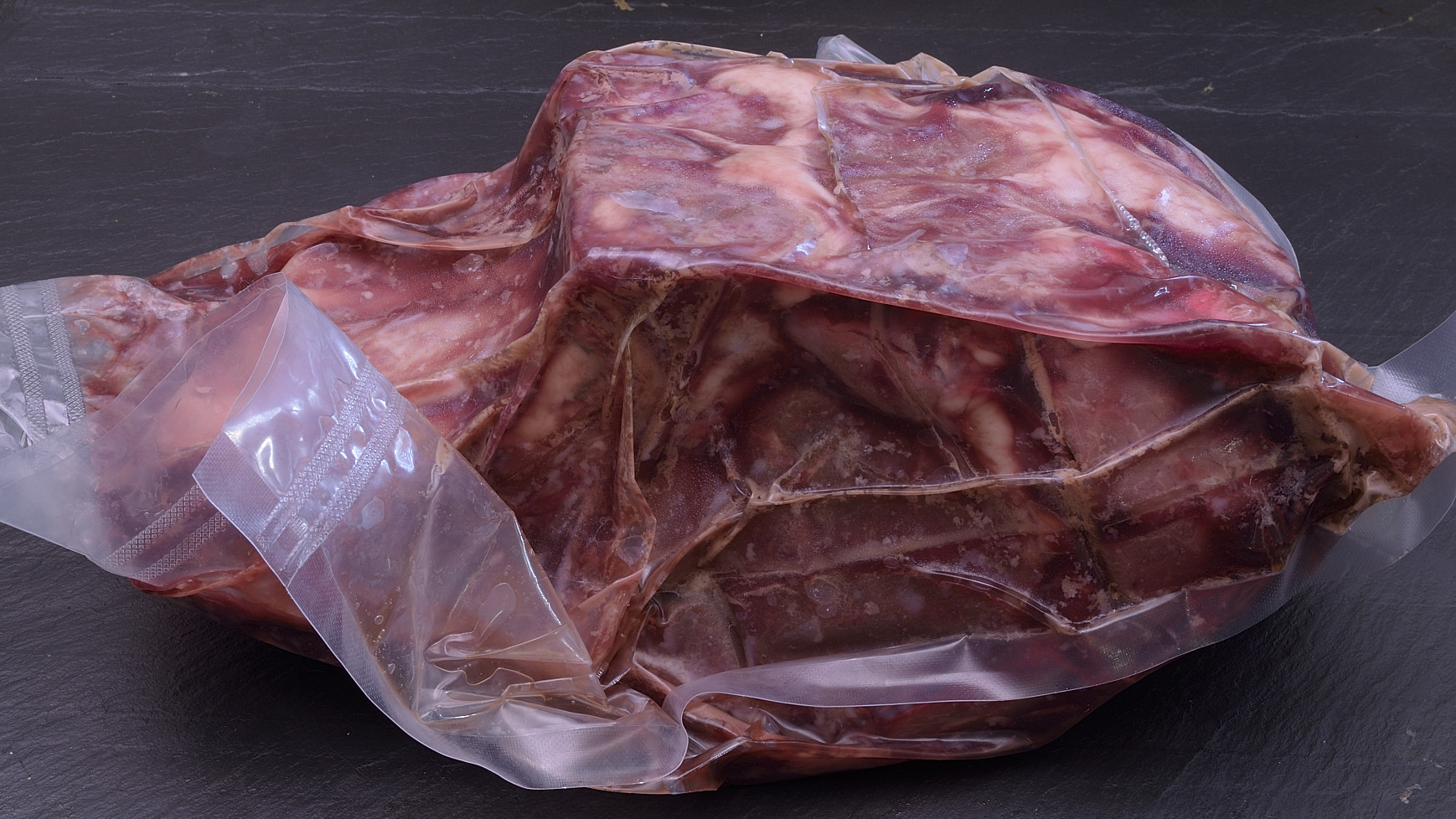
Remove the sealed package from the refrigerator and dip in warm tap water (110 F/43 C) or a running sous vide bath to dissolve the gel inside the bag.
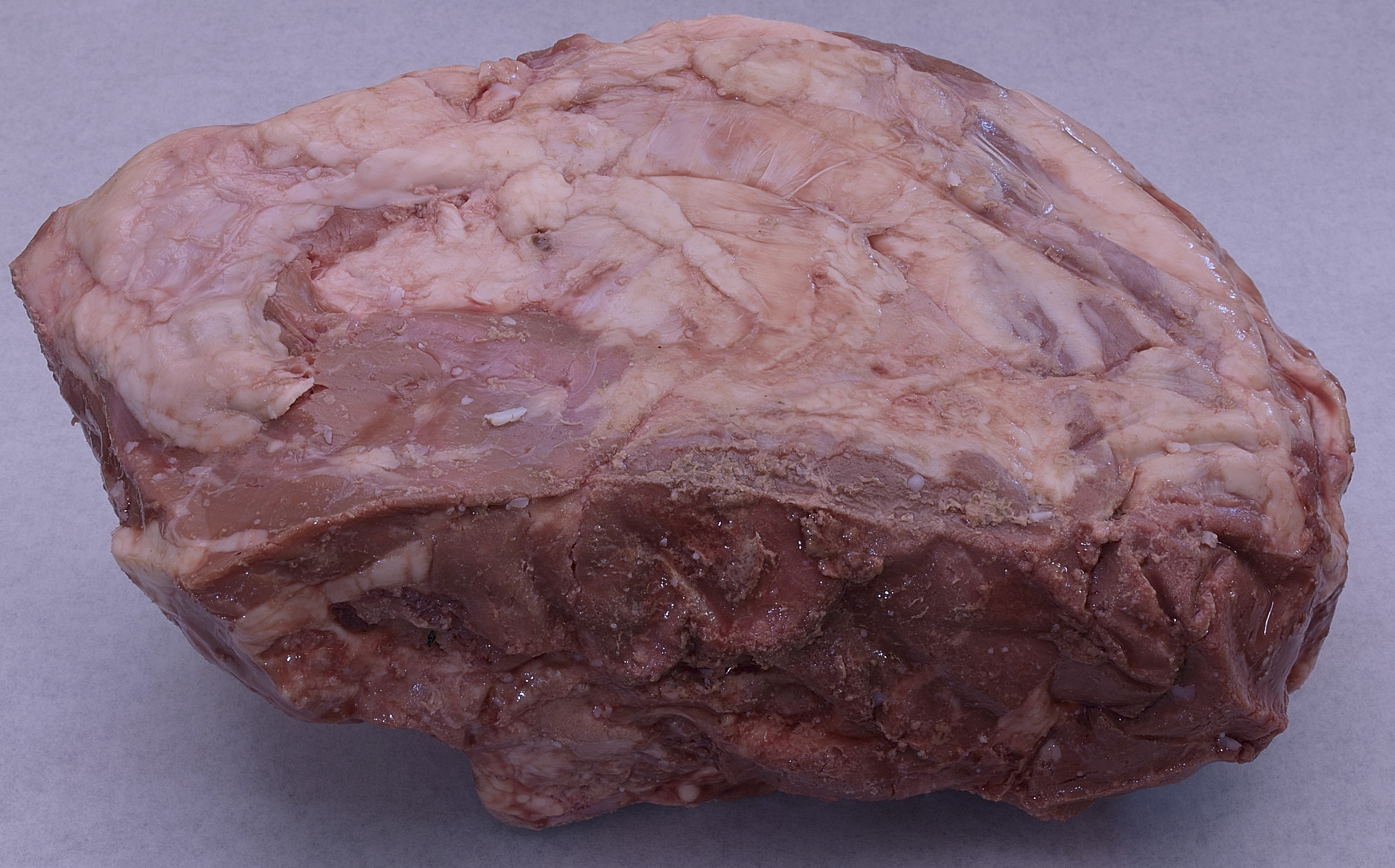
Harvest the juices, process as explained HERE. Refrigerate for future use. Pat the roast dry. Stage onto a cookie sheet/sheet pan covered with parchment.
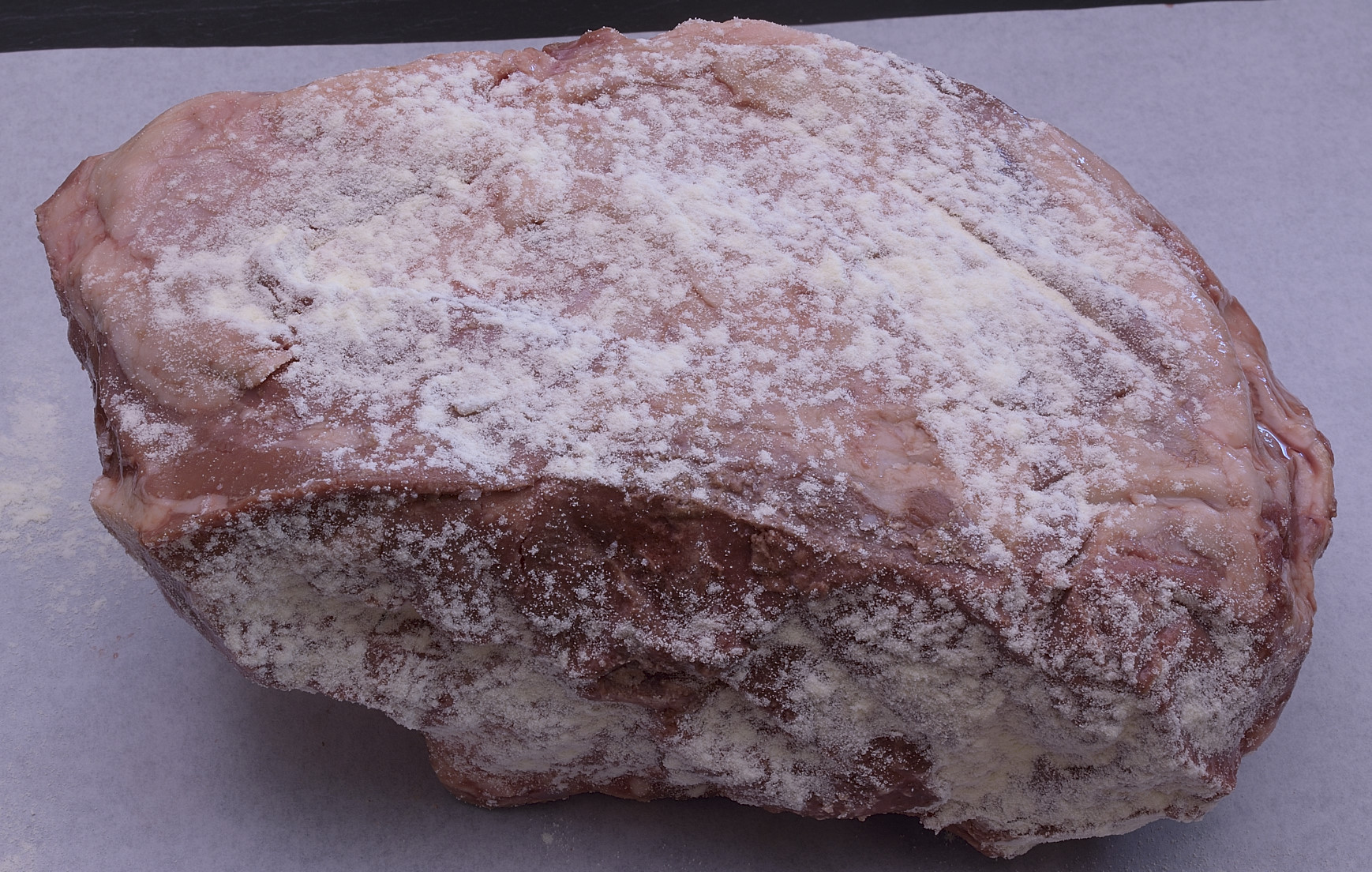
Dust the roast with powdered egg whites. Fresh egg whites can also be used–one beaten egg white is more than enough to apply a thin moisturizing coating.
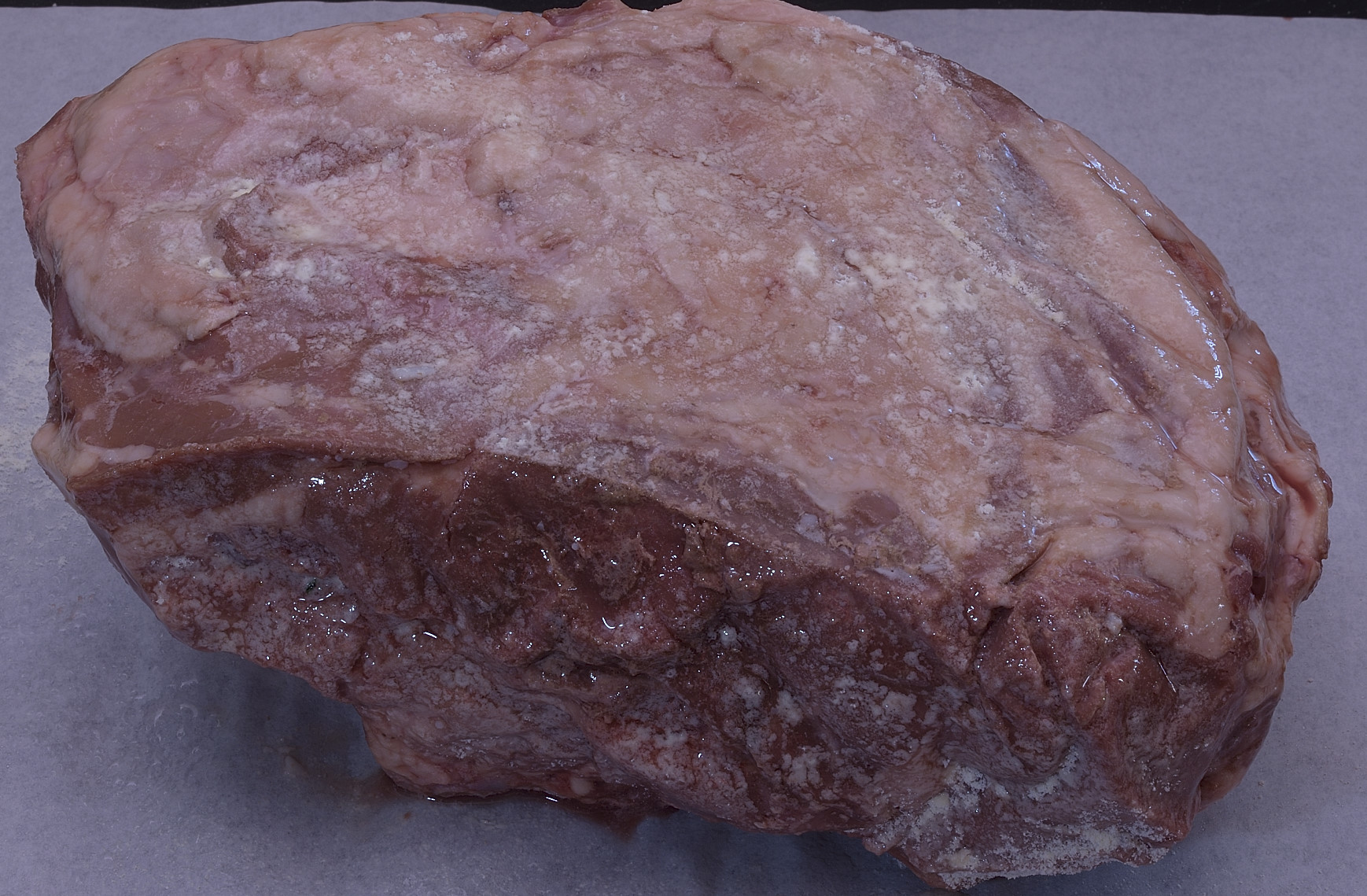
If using powdered egg whites, spray or drizzle lightly with water to create a sticky surface.
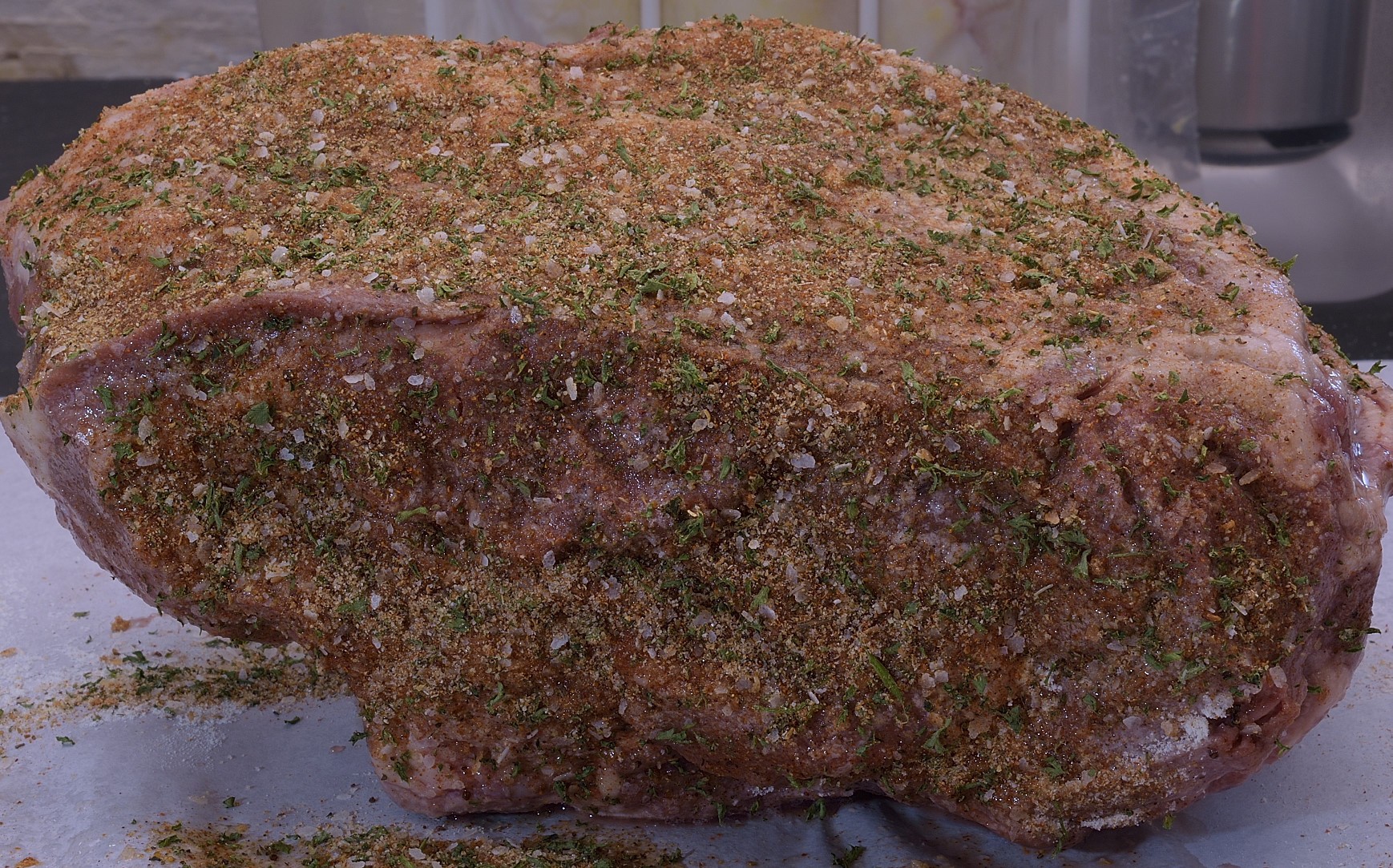
Sprinkle generously with your favorite seasoning or rub.
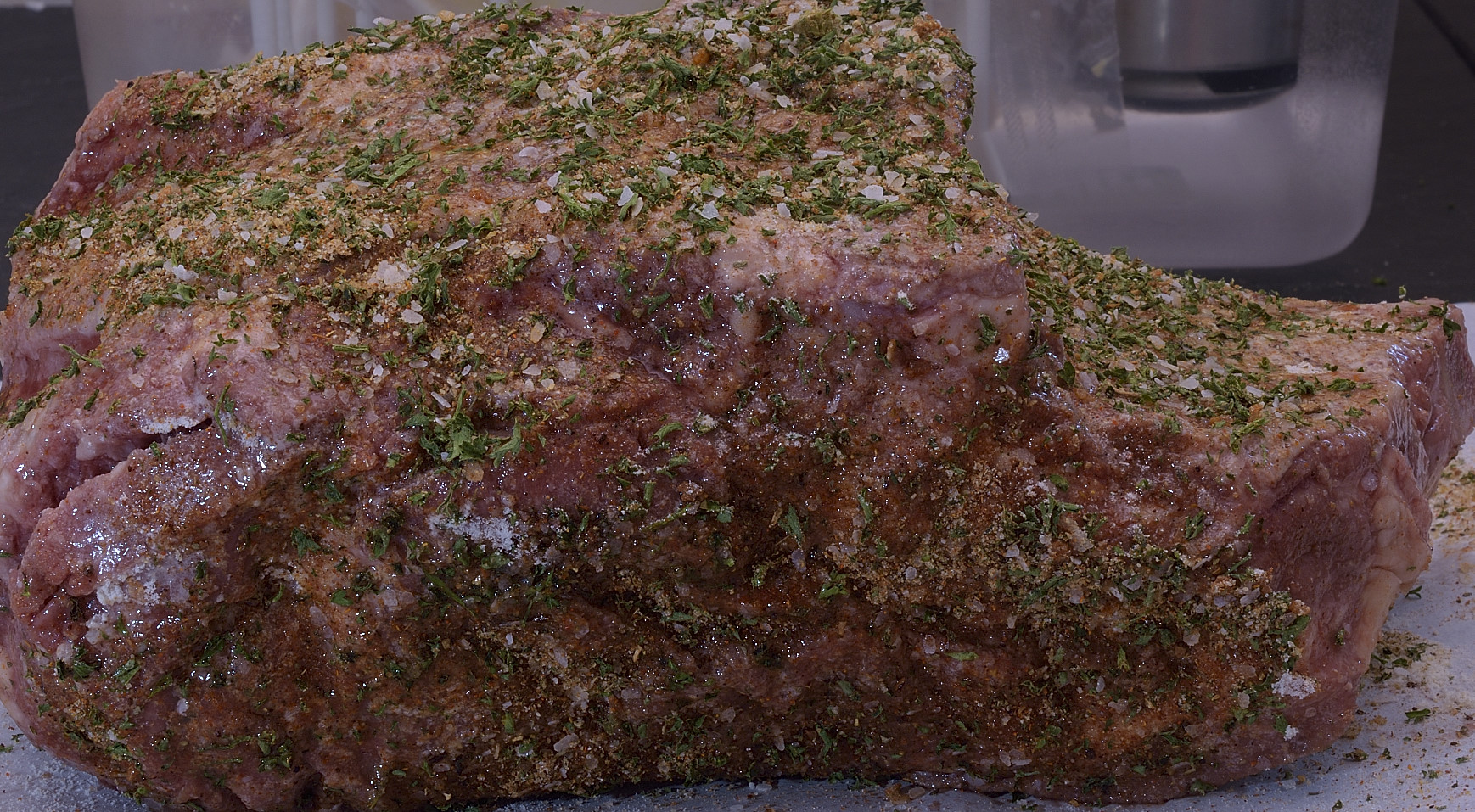
Yes, on all sides. I use a pellet smoker set to 180 F/82 C. The lower you can set your smoker, the more smoke flavor you will attach to the roast.
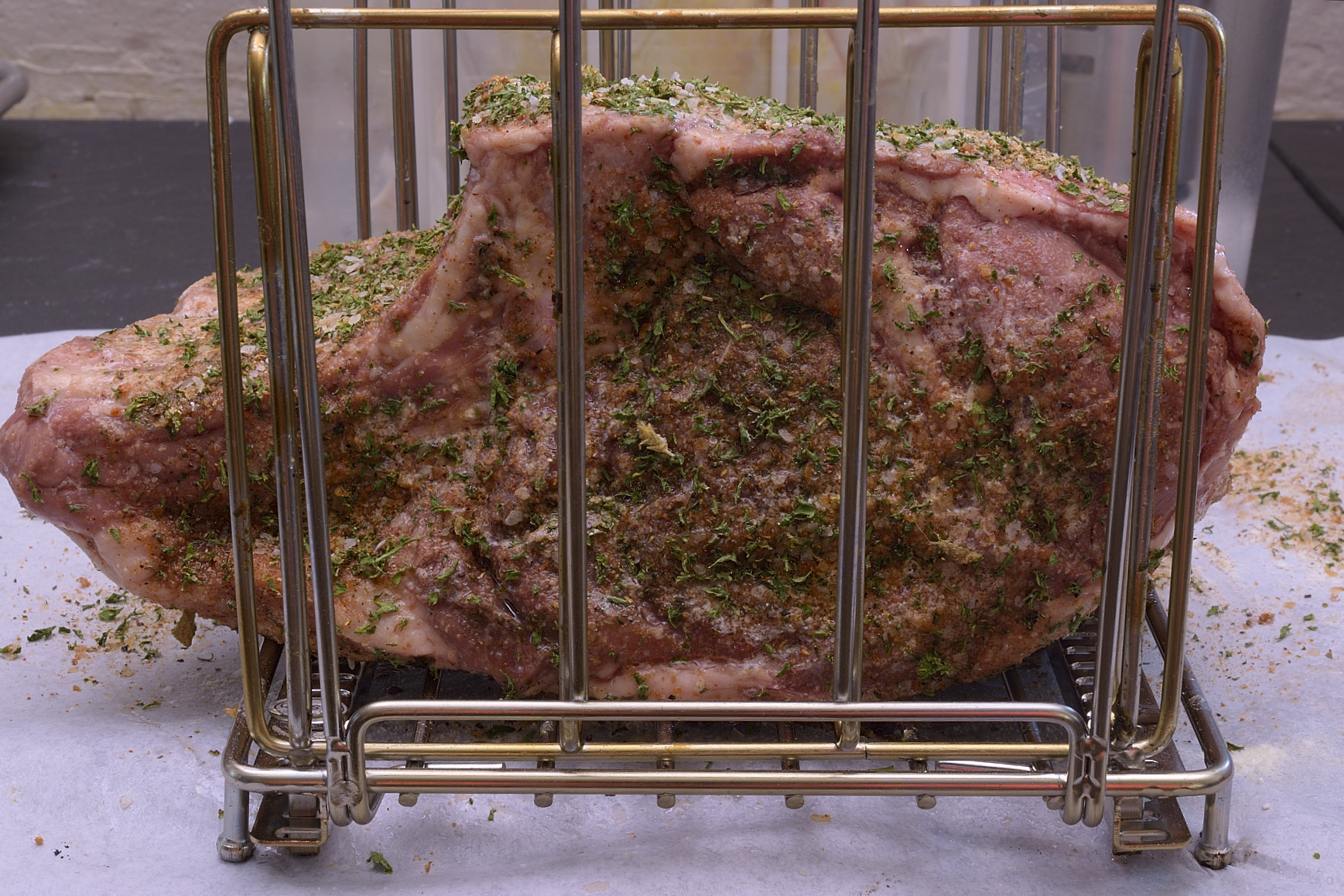
Stage into a fire proof rack–this one’s a Lipavi–also dishwasher proof, will not rust.
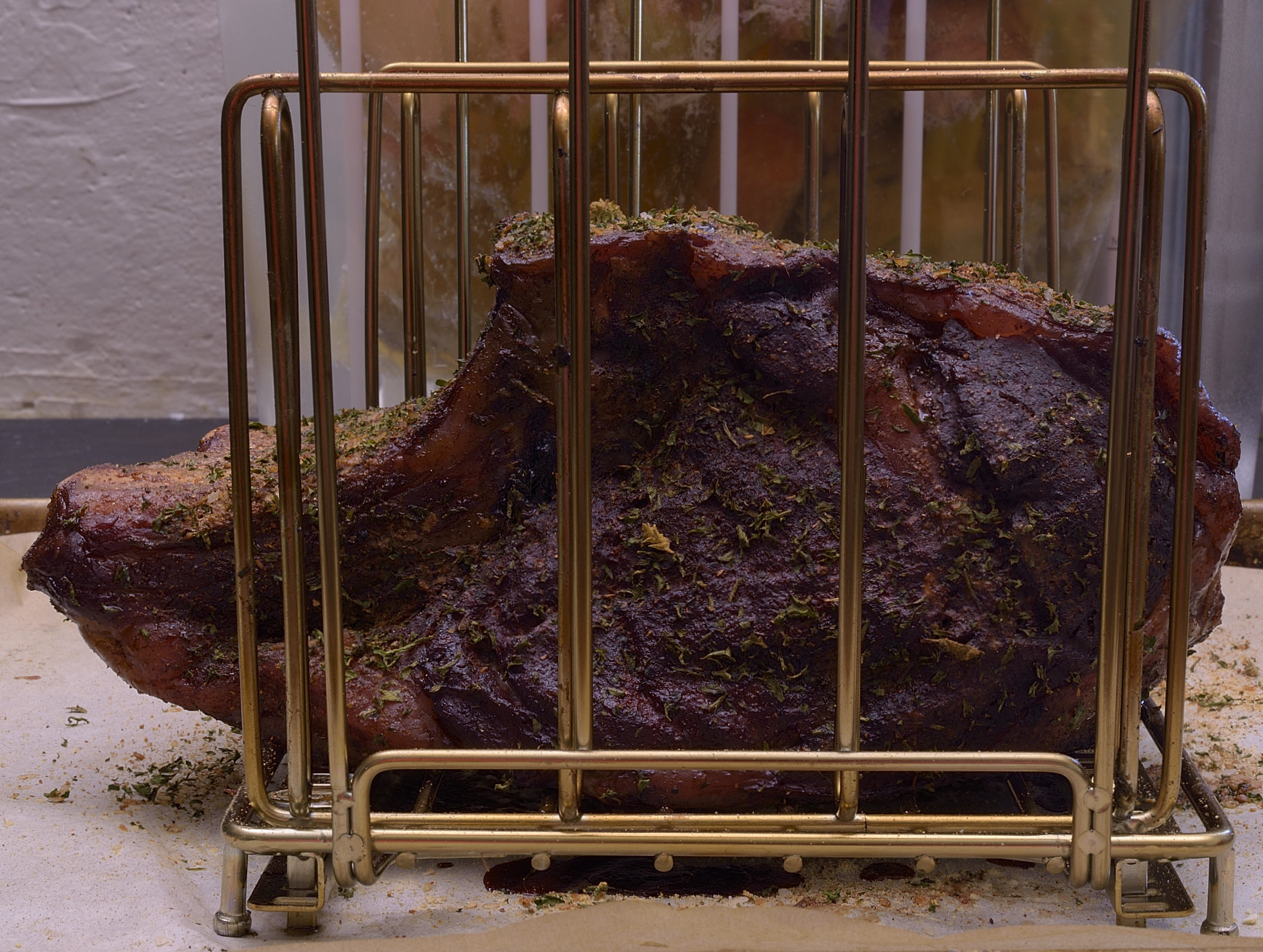
This one was smoked for almost 7 hours, but more importantly than the time, a probe thermometer should be used to make sure the target temperature is achieved–in this case, no higher than 135 F/57 C. Meanwhile, it’s a good idea to heat plates in the oven at 145 F/62 C or thereabouts.
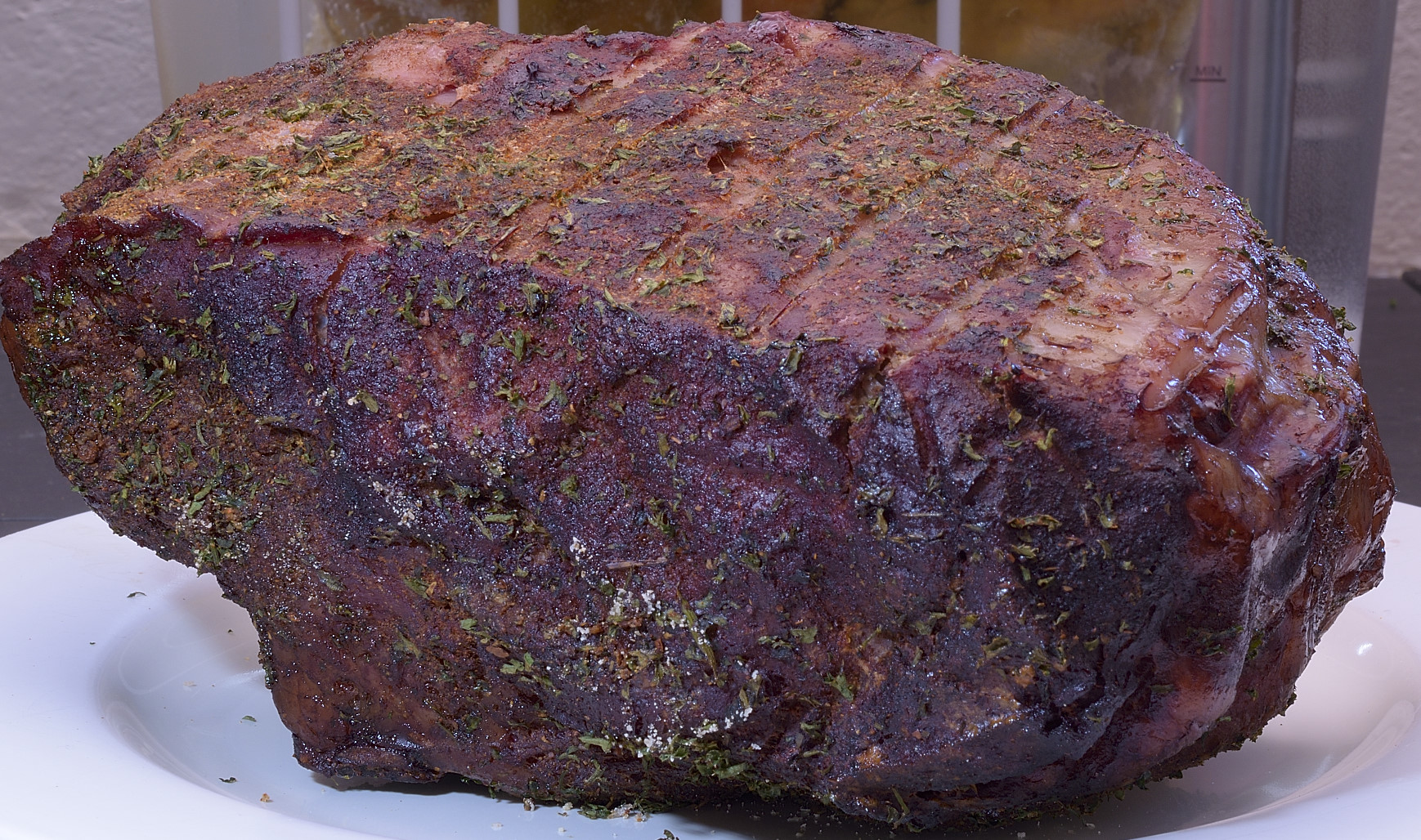
Remove the roast from the rack.
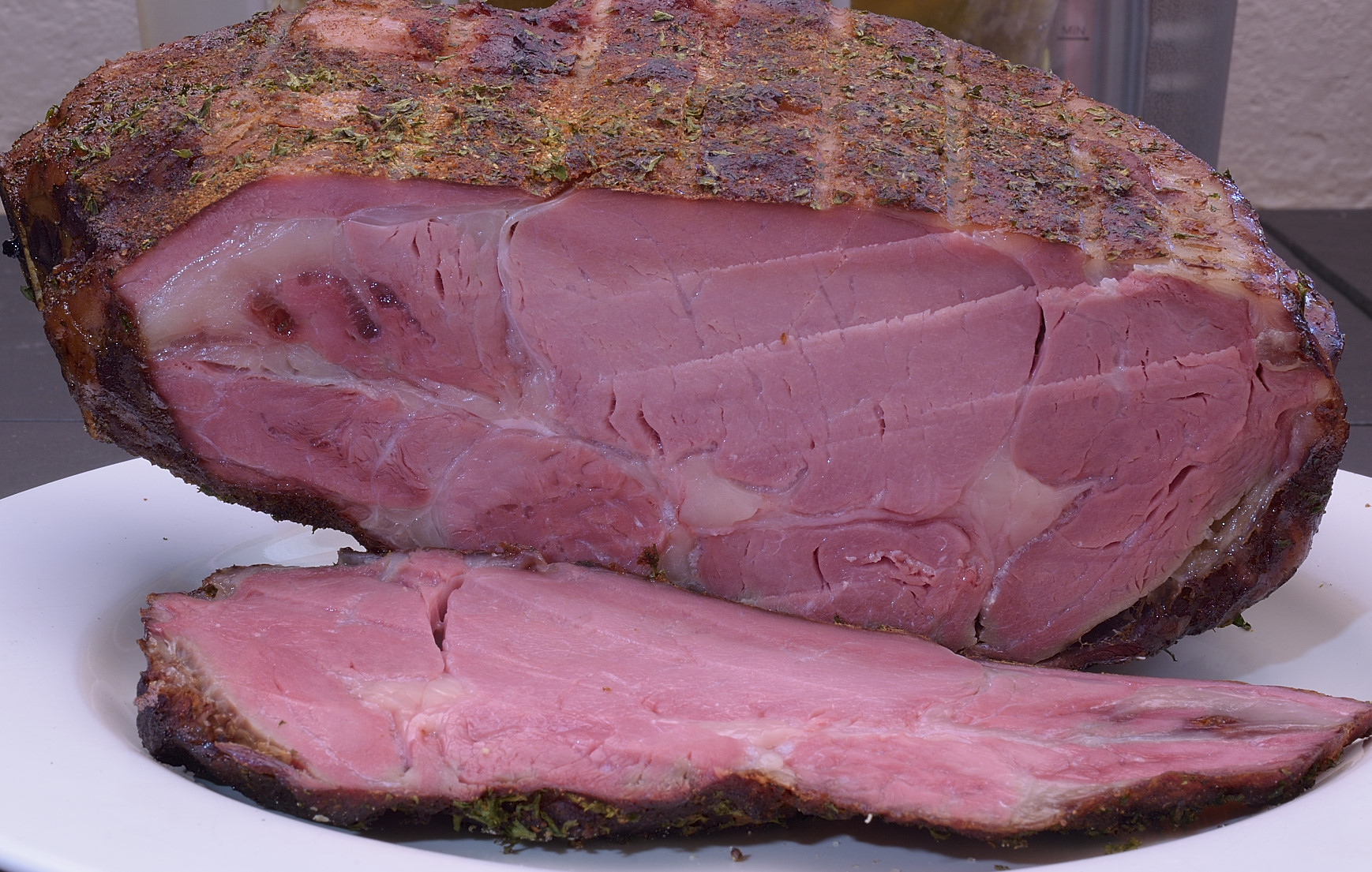
We cut a sliver from the outside so that the final result did not look like an “end cut.” Not that there’s anything wrong with that. Cut the roast in half, between the bones.
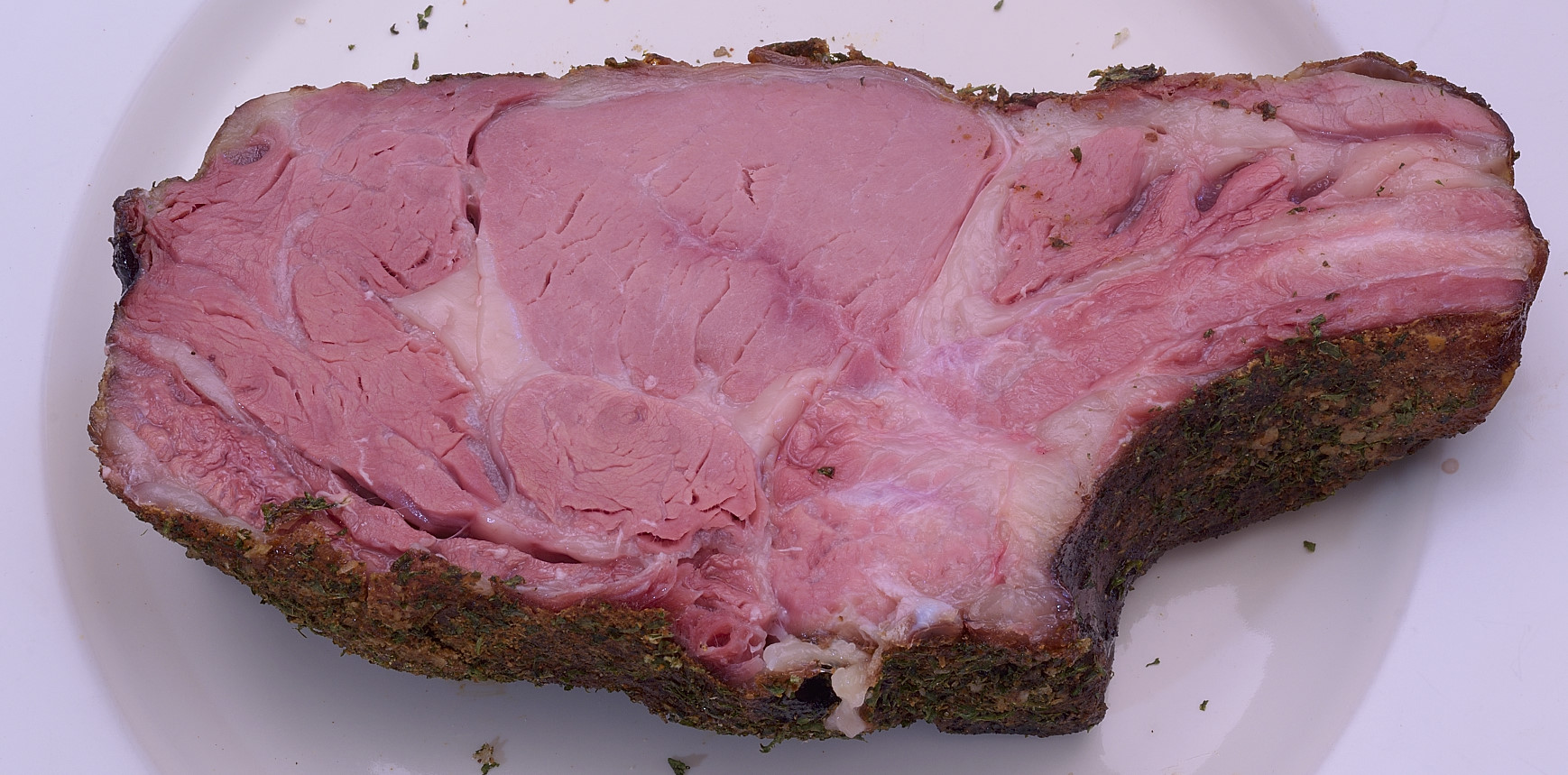
Yes
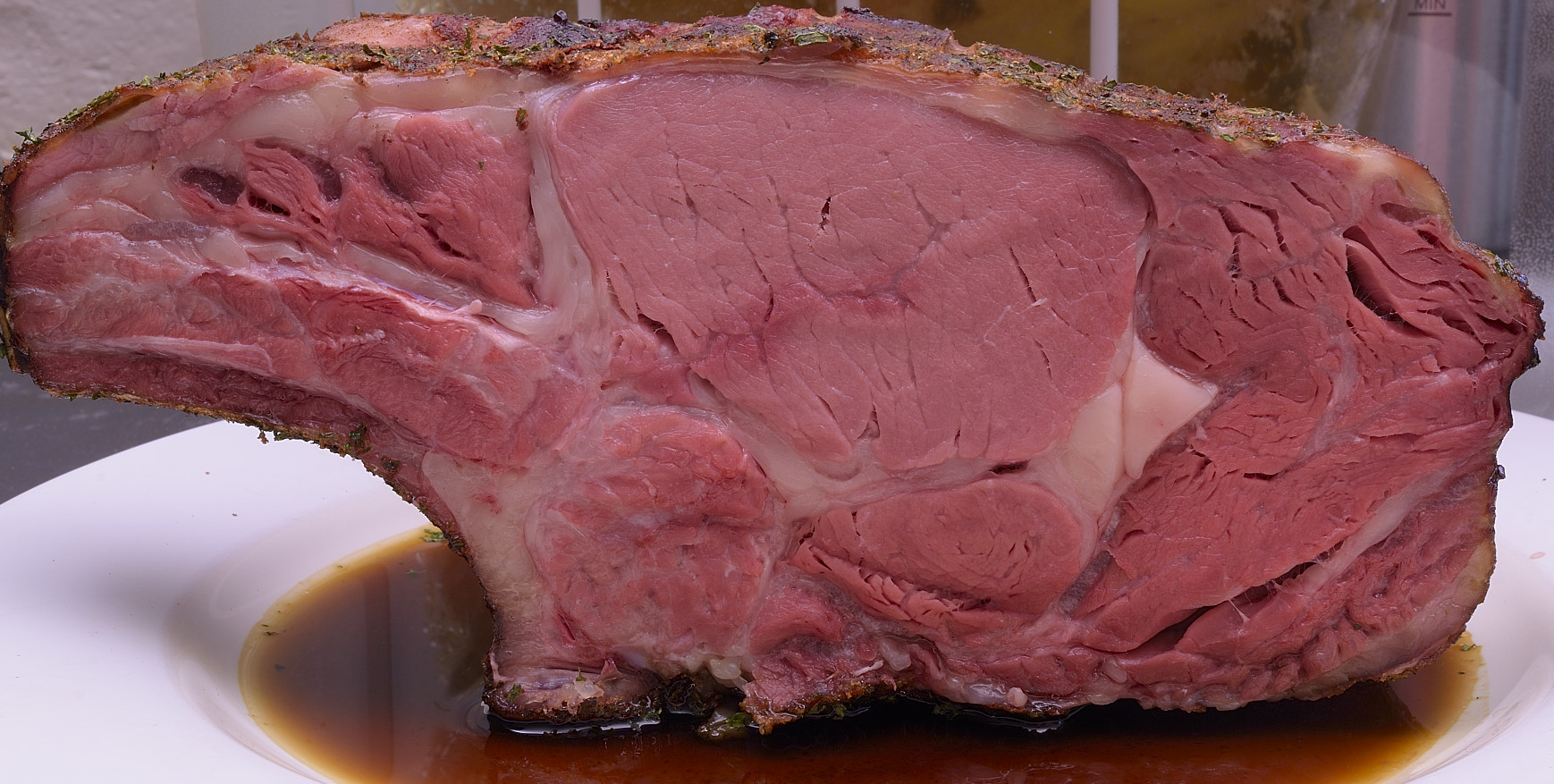
Thick enough to stand on its edge, even. I dilute demi-glace to make the jus. The packaged versions are extremely high in sodium, but otherwise very convenient.
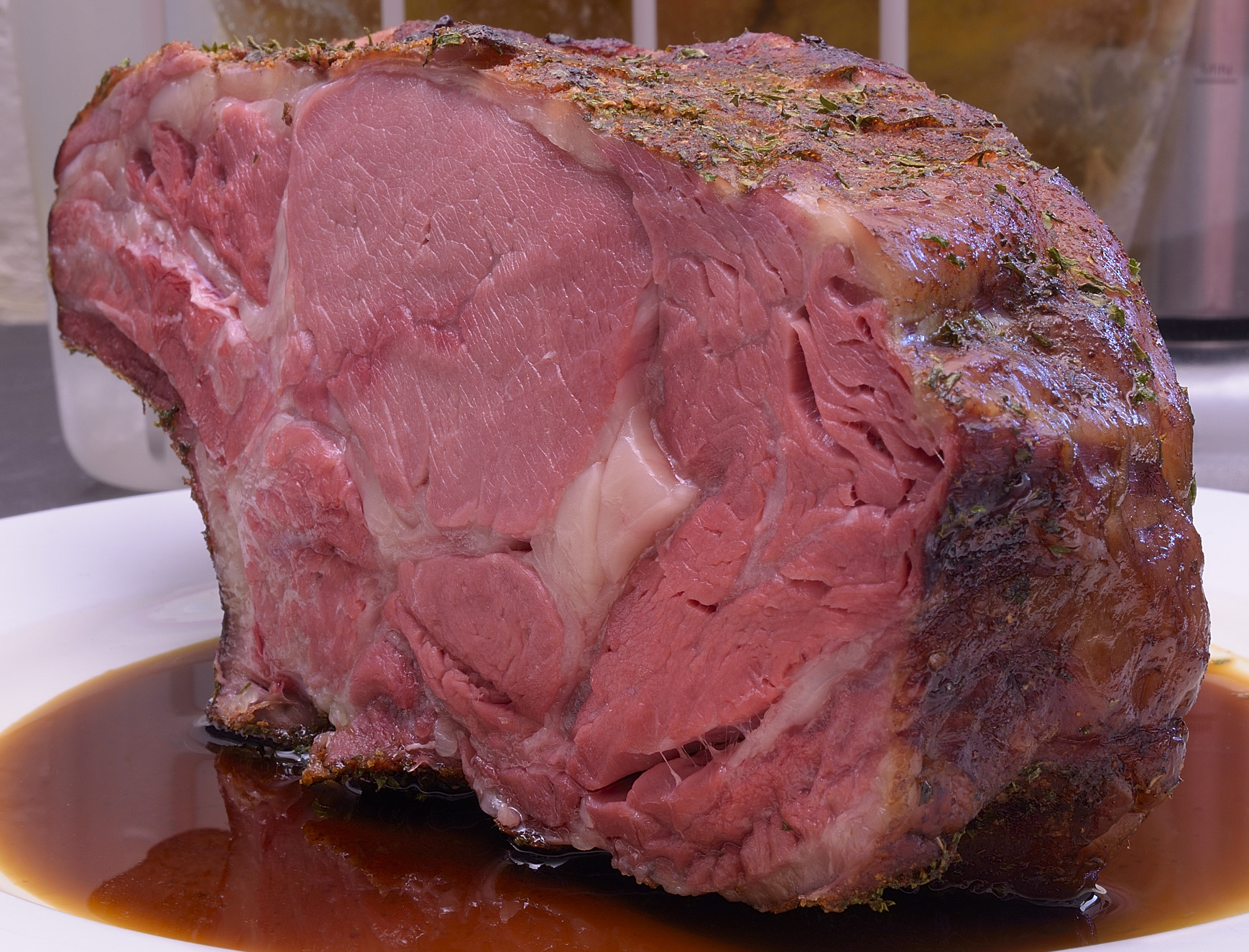
For the purposes of the display,
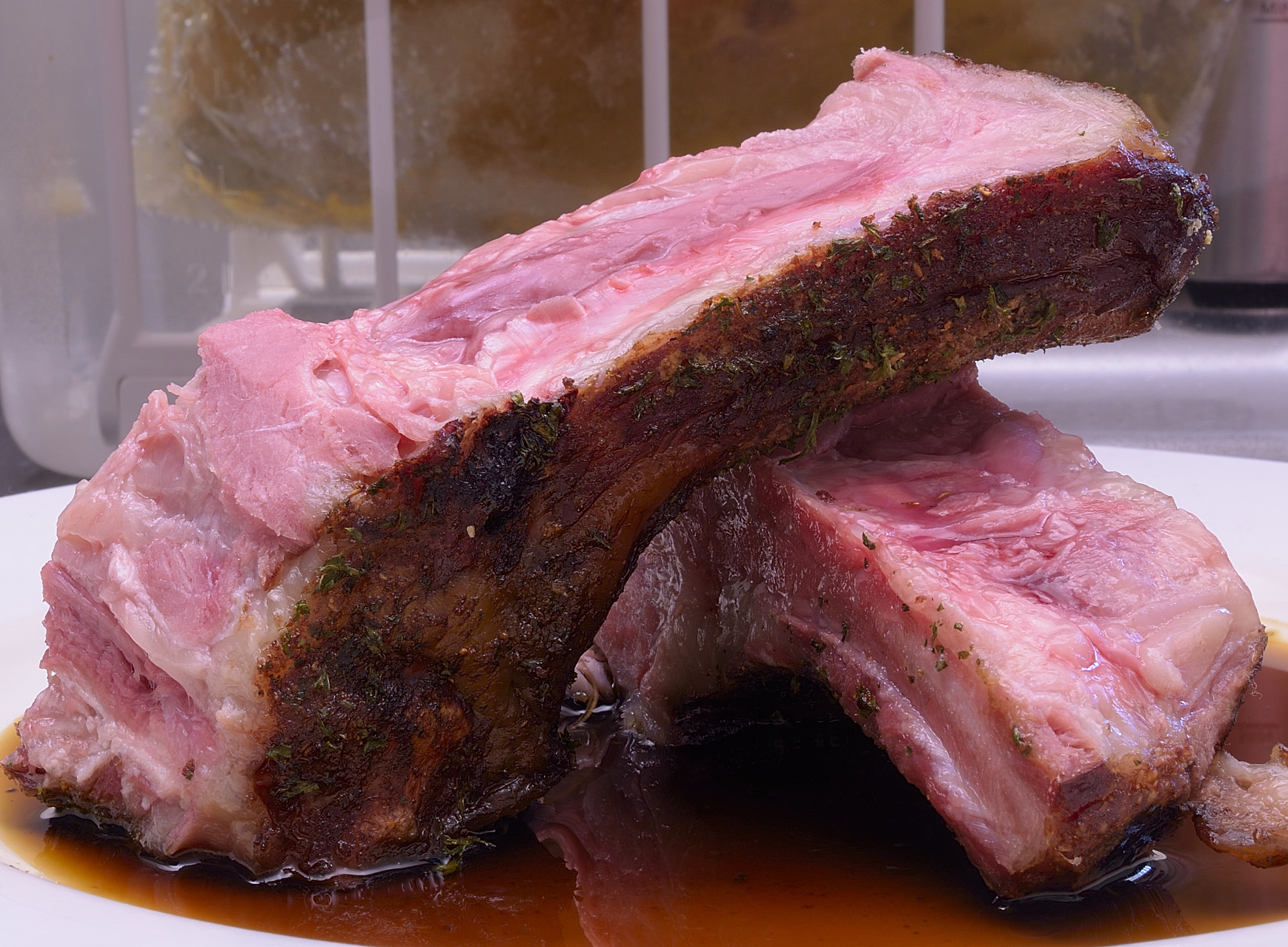
I removed the bones to make another presentation–rare but tender. This is very difficult to do using traditional methods.
Creamed spinach
If you put a little salt on the greens and vacuum them, they wilt down and release all the water and a bunch of chlorophyll too. You do that first, and then you open the bag, take the greens out, wrap them in a towel and vacuum again. Not only will they do what you want now, they will keep in the fridge indefinitely in this state until you want to use them. Don’t ask me why, I don’t know why.
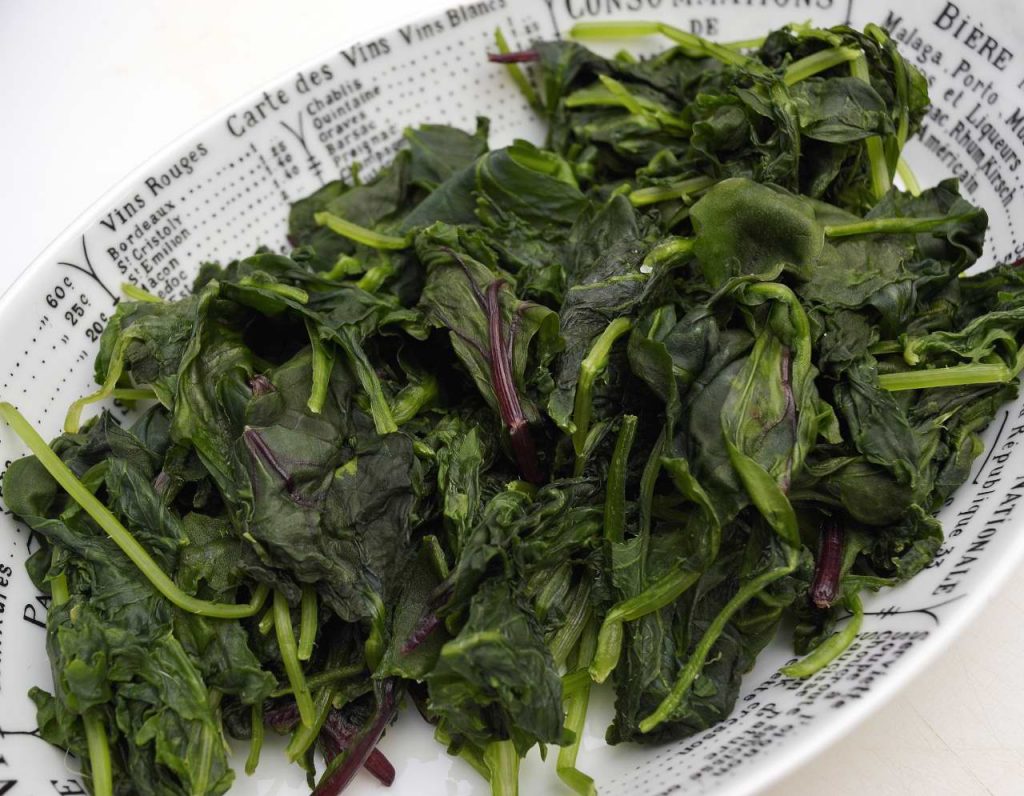
I learned it from a Greek lady a long time ago who made Spanikopita that way. She didn’t vacuum it, she just sprinkled it and came back the next day and squeezed it out. Vacuuming gets it done in a matter of minutes. So, I did the cream butter emulsion thing, 3 to 1…
